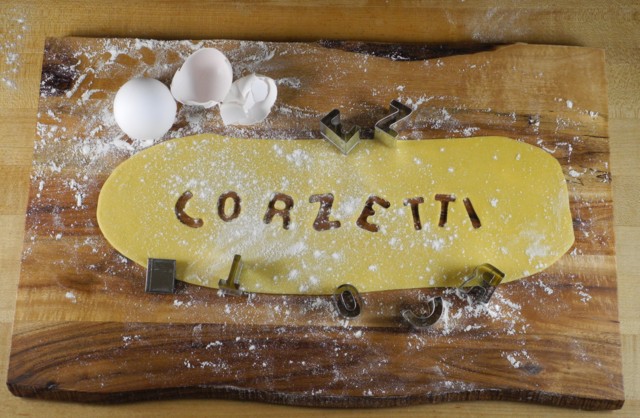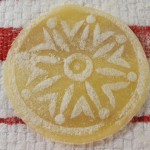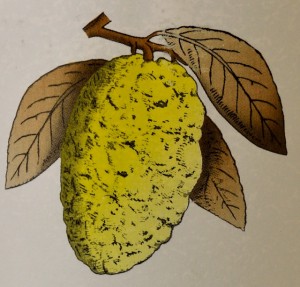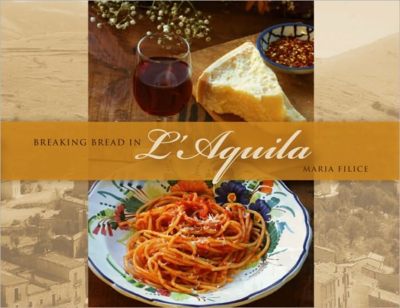Topic Index
The font size for a topic word is sized by the number of articles that reference that topic. The more articles the bigger the font.
Click on a word to search for posts with that topic. This page will reload with the search results.
On the Occasion of Italy’s National Day
Press Statement
The Honorable Hillary Rodham Clinton
Secretary of State, United States of America
On the Occasion of Italy’s National Day – Festa della Repubblica
On behalf of President Obama and the people of the United States, I am delighted to send best wishes to the people of Italy as you celebrate your national day this June 2. I send my deepest condolences to the family and friends of those who lost their lives in Tuesday’s earthquake. The United States stands by the Italian people as you rebuild and recover.
As we look forward to 2013 as the Year of Italian Culture in the United States, we reflect on the history and shared values that have bound our nations and peoples over the centuries. Americans have long been drawn to Italy to marvel at the art, admire the antiquities, and rediscover their heritage. For years, Italian-Americans have enriched and enlivened American culture in ways large and small.
Our two countries are working together for the future peace and prosperity of our world. As you celebrate this special day with the warmth of good food, family, and friends, know that the United States stands with you.
Washington, DC
June 1, 2012
PRN: 2012/874
Senate Resolution – 150th Anniversary of Italian Unification
A Resolution
Senate Resolution – 150th Anniversary of Italian Unification
![]()
To close the year long celebration of 150 years of Italian Unification the United States Senate passed a resolution honoring the anniversary. At the opening of the year’s celebration President Barack Obama made A Presidential Proclamation. To read his words, click here.
The following resolution was submitted by John Kerry (D) Massachusetts; which was considered and agreed.
Senate Resolution 394
A resolution commemorating the 150th anniversary of Italian Unification and the beginning of warm and abiding relations between the people of the United States and Italy.
Whereas it has been 150 years since March 17, 1861, when the parliament of a united Italy proclaimed Victor Emmanuel II their king;
Whereas the story of the Italian Risorgimento, in particular Giuseppe Garibaldi’s heroic adventures, have inspired generations of Americans;
Whereas, between 1880 to 1920, an estimated 4,000,000 Italian immigrants arrived in the United States to settle and help build our Nation;
Whereas today there are almost 18,000,000 Americans of Italian ancestry whose contributions to our society are diverse and profound;
Whereas Italy has been a loyal NATO ally and a major strategic partner for over 60 years;
Whereas Italian-Americans have made enormous contributions to the United States; and
Whereas Italy remains a steadfast partner in the defense of a shared vision of fundamental human rights and the preservation of democratic ideals: Now, therefore, be it
Resolved, That the Senate–
(1) recognizes the 150th anniversary of the foundation of the modern state of Italy;
(2) celebrates the ties of kinship and shared democratic values that unite the two countries across the Atlantic;
(3) honors the service and sacrifice of Italy’s soldiers, sailors, and airmen alongside United States forces most recently in Iraq, Afghanistan, and Libya; and
(4) reaffirms the friendship between the Government and people of the United States and the Government and people of Italy
L’Americana – a Cocktail for Amanda Knox

Oh, how I waited on this one. Don’t confuse this with the classic cocktail, The Americano. No, I did not misspell anything. For four years I have followed the saga of Amanda Knox, the young American student jailed in Perugia, Italy for the November 2007 murder of her roommate, Meredith Kercher. I followed Amanda through her original trial, her incarceration and appeal, and finally through this last most excruciating weekend. I emailed with friends halfway across the globe. We agonized for Amanda, her co-defendant Rafaelle Sollecito and especially for the Kercher family. Lady Justice, as they say, grinds slowly, but she grinds finely, and she freed Amanda Knox. Even now, Amanda is most likely on her way back home. Amanda’s home now. Read the remainder of this entry »
Acqua di Cedro – a Drink and a Panna Cotta
 Move over Limoncello. Acqua di Cedro has arrived. This clear liqueur is made with citron, cedro in Italian (botanical name – Citrus medica.) Poor unattractive and underused citron, aside from its candied peel used for Christmas baking, it is pretty much ignored in my kitchen. Not so however on my dressing table where its essential oils form the base of many of my favorite perfumes. This most ancient of citrus with its gnarled and bumpy skin is said to have flourished in the Hanging Gardens of Babylon and was brought to Italy by Alexander the Great – this baby’s got some history behind it. Read the remainder of this entry »
Move over Limoncello. Acqua di Cedro has arrived. This clear liqueur is made with citron, cedro in Italian (botanical name – Citrus medica.) Poor unattractive and underused citron, aside from its candied peel used for Christmas baking, it is pretty much ignored in my kitchen. Not so however on my dressing table where its essential oils form the base of many of my favorite perfumes. This most ancient of citrus with its gnarled and bumpy skin is said to have flourished in the Hanging Gardens of Babylon and was brought to Italy by Alexander the Great – this baby’s got some history behind it. Read the remainder of this entry »
Corzetti: Edible Art

This is Part 1 of a series
For detailed information and photo essays on how to make corzetti, along with recipes, please delve further into The Corzetti Files:
The Intagliatore of Chiavari, The Corzetti Files – Part 2
Corzetti agli Spinaci con Gorgonzola, The Corzetti Files – Part 3
Where to Buy Corzetti Stamps, The Corzetti Files – Part 4
Corzetti Stampati – and a Giveaway! The Corzetti Files – Part 5
 When I first saw one I knew I had to have one. To those of you who know me – no laughing, no eye rolling, please. This time it was for real. And to those of you who do not know me, my friends are laughing because when ever I see any new kitchen item I say I have to have it. But corzetti stamps and the pasta made with them are in a class by themselves. Read the remainder of this entry »
When I first saw one I knew I had to have one. To those of you who know me – no laughing, no eye rolling, please. This time it was for real. And to those of you who do not know me, my friends are laughing because when ever I see any new kitchen item I say I have to have it. But corzetti stamps and the pasta made with them are in a class by themselves. Read the remainder of this entry »
Breaking Bread in L’Aquila
Before dawn on the morning of April 6, 2009 the town of L’Aquila in Italy’s Abruzzo region was struck by a violent 6.3 magnitude earthquake, terremoto in Italian. Townspeople awoke in terror as the walls of their homes, businesses, government buildings and churches collapsed around them. The air was cold, but the people of L’Aquila ran outside to safety in whatever they had on to escape falling debris. When the sun shone on the town, the devastation was virtually complete. Rubble was everywhere. The dead were lined up in rows, and rescuers from the Abruzzo Civil Authority and Ministry of the Interior, along with the town’s inhabitants, worked feverishly to save those trapped and to remove the dead from the rubble. 308 people died that day. As of June 2010 Italian government statistics tell us that 48,810 people who lived in L’Aquila and surrounding villages are as yet unable to return home. The reconstruction effort continues.
Maria Filice, author and food stylist has written Breaking Bread in L’Aquila, a collection of 49 recipes from the Abruzzo region. Ms. Filice, whose family hails from the region of Calabria has a deep and abiding love for the Abruzzo region and L’Aquila in particular; her late husband Paul Piccone was born in that beautiful city, and the two traveled often to the region.
Ms. Filice has produced a wonderful volume. Its recipes are divided into days of the week with a complete menu presented for each day. Mix and match as you will. I certainly do. The author has generously included sections on how best to use her book, her entertaining philosophy and a primer on Abruzzese wines along with pantry essentials and a most welcome measurement conversion chart. The photography and food styling are ravishing, and the reader is given a warm and enticing introduction to this majestic region, land of shepherds and the sea. My grandfather, Gaetano Crocetti was born in Abruzzo in 1894, so this book holds pride of place on my shelf.
The net proceeds from the sale of this book will be donated to the L’Aquila earthquake restoration efforts. With Christmas around the corner I cannot think of a better gift for the cook or Italophile in your life. It would be a gift for two, whomsoever receives the book and the people of L’Aquila.
I am pleased to share with you, reprinted here courtesy of Telos Press, Paul Piccone’s recipe for polpettine, little meatballs. I have also included Maria’s charming introduction. She serves these with her Tomato Sauce and an Abruzzese specialty, pasta alla chitarra. The polpettine are delectable and simple to make. Enjoy, and please support L’Aquila earthquake relief by purchasing a copy of Maria’s book.
Click here to purchase the book at Food & Fate
Check out Maria’s blog here.
Take a look at the Breaking Bread in L’Aquila Facebook page here.
Follow Maria on Twitter @FoodandFate
Pasta alla Chitarra con Polpettine di Paolo
(Pasta alla Chitarra with Paul’s Meatballs)
Paul’s meatballs were famous-not only for their flavor, but also for their size: he liked them small! Though, he was a fabulous cook, once he let me in the kitchen (and taught me how to make his favorites), he didn’t come back in. As queen of the kitchen, I began making his favorites, like this one. We would sometimes serve these meatballs on top of pasta alla chitarra, Abruzzo’s famous pasta. This is made with a pasta guitar (it looks like a harp) to produce squarish-shaped spaghetti. You can also use spaghetti or your favorite pasta. Growing up, my mother would serve it with our favorite rigatoni or penne pasta.
serves 6
3 cups of tomato sauce (see page 44 in the book)
1 pound ground pork
1 pound ground beef
2 eggs
1 ½ cup freshly grated Parmigiano cheese
1 tablespoon fresh Italian flat leaf parsley, chopped
1 cup bread crumbs (unseasoned)
1 clove garlic, minced
½ teaspoon fresh ground black pepper
2 teaspoons salt
1 pound of pasta alla chitarra (fresh)
3 tablespoons extra virgin olive oil
In a large bowl, combine the pork, beef, eggs, bread crumbs and 1 cup of the cheese. Add the parsley, garlic, salt and pepper and combine well. Using your hands, form quarter-sized meatballs and place them on a tray. (If the mixture is too stick, rinse your hands under cold water and leave them slightly damp.)
Heat the oil in a frying pan over medium heat. Fry the meatballs in batches, turning them frequently, until they form a nice brown crispy layer on the outside and are cooked through (approximately 10 to 12 minutes). Drain them on paper towels.
Heat the tomato sauce in a medium-sized pot over medium heat. Add the meatballs and cook on low heat for 30 minutes.
Using a large pot, cook the pasta according to the package instructions until it is al dente. Drain the pasta and return it to the pot. Add the sauce with meatballs and toss well. Top with remaining Parmigiano and serve.



